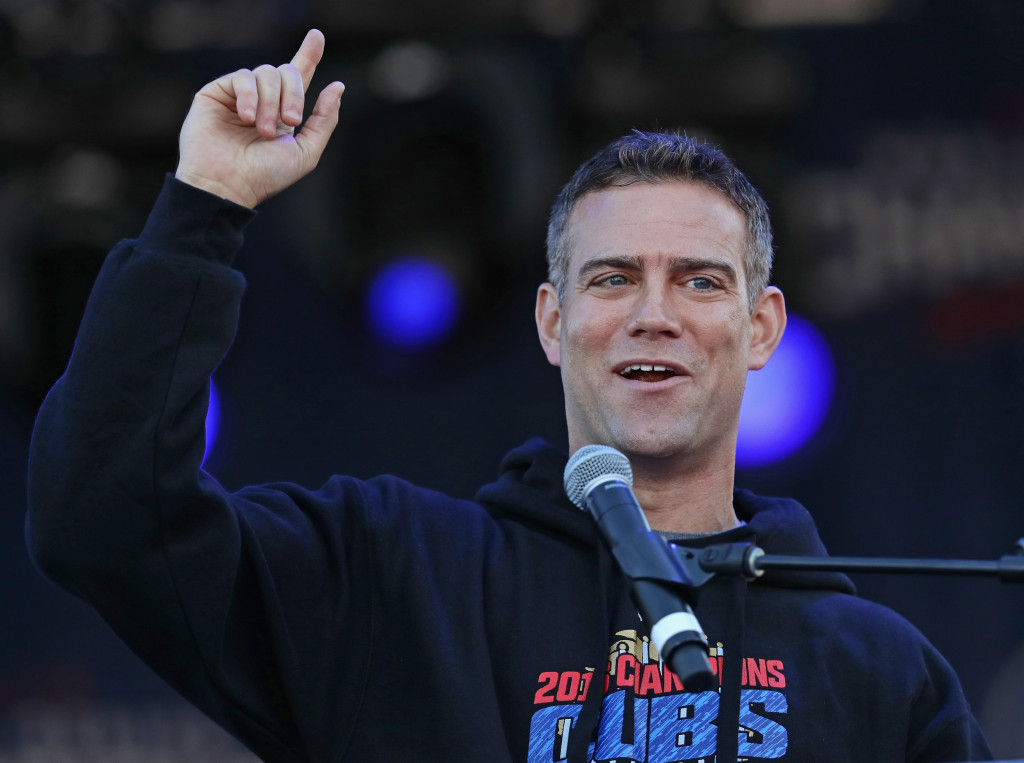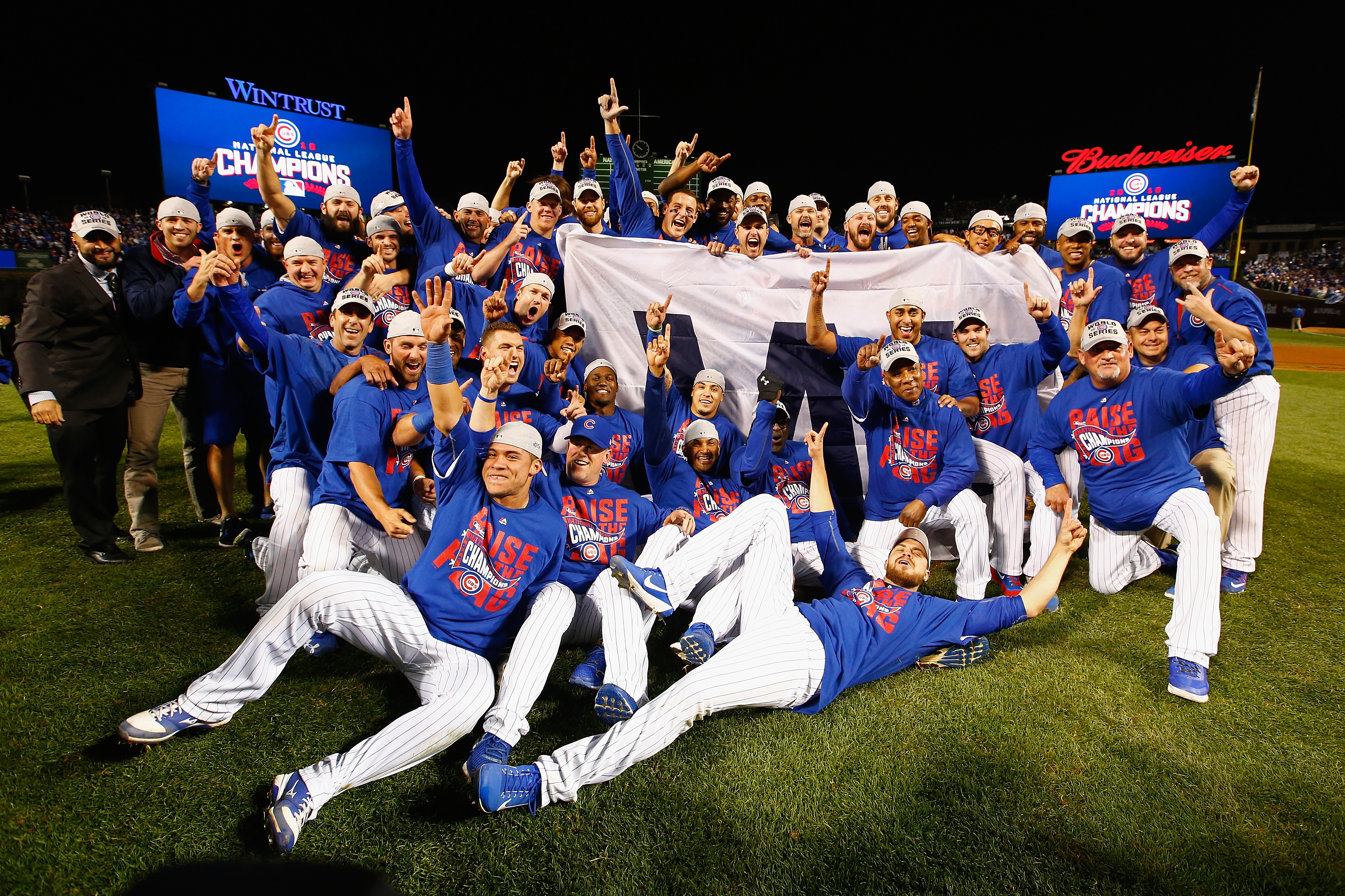It is no stretch to say the Chicago Cubs are the most deserving World Series champions since the turn of the century. They won 97 games last year and 103 this year, were the consensus best team in baseball in 2016 from April to October and fended off three genuinely difficult opponents during their run through the playoffs.
The Cubs’ title was not a product of lucky bounces and one-hit wonders outplaying their talent over a short postseason. Instead, it was a result of as close to a perfect roster as we’ve seen since the late-90s Yankees.
This Cubs team is a triumph of roster-building, a lesson in what happens when a front office develops a plan, sticks to it through tough times and executes every facet. General mangers (and fantasy team owners) across sports can typically only fantasize about a series of moves as successful as those Theo Epstein and the Cubs have executed over the last five years.
Here’s what we can learn from how the World-Series champion Cubs were built.

Sometimes you’ve got to break it down to build it up
When Epstein was hired in October 2011 to be the Cubs’ president of baseball operations, the franchise had not suffered a 100-loss season since 1966. In Theo’s very first campaign, the team lost 101 games, third-most in club history. The following year Chicago lost 96 games, tied for sixth-most in club history. Many Cubs fans were, to put it gently, displeased.
But in Year Three under Epstein, the Cubs improved their record to 73-89, and in Year Four, they leapt to 97-65. One of the main reasons for that jump was NL Rookie of the Year Kris Bryant, whom the team had selected second overall in the MLB Draft after the 100-loss season. Another reason for the sudden improvement was Kyle Schwarber, picked fourth overall after the Cubs’ 96-loss campaign.
In 2015 and 2016, the Cubs also got major contributions from Jake Arrieta, Addison Russell, Kyle Hendricks, Pedro Strop, Carl Edwards Jr. and Justin Grimm, all acquired during the first three years of the Epstein Administration in the types of veteran-for-prospect trades rebuilding teams sometimes balk at. Unlike many bad teams with a handful of established players, the Cubs were entirely unafraid to dismantle their roster with an eye toward the future. No one likes to lose in the short term, but Epstein showed that sometimes the quickest way to the top is to visit the bottom.
Build with hitters, figure out pitching later
When the Cubs drafted Schwarber in 2014, most observers were confused. At that point, the Cubs already had a stockpile of young position-player studs: Bryant, Anthony Rizzo, Starlin Castro, Javier Baez, Jorge Soler, Albert Almora. Most analysts figured it was time for Epstein to find an ace starting pitcher.
But not only did the Cubs draft Schwarber that June, they traded for Russell the following month, giving them another shortstop in an organization loaded with them. Meanwhile, they had no can’t-miss hurlers anywhere in the organization. The Cubs were banking on the dependability of position-player prospects relative to their pitching counterparts. No young player is totally projectable, but while young pitchers blow out their arms all the time, hitters tend to be a safer bet. So the Cubs stocked up on early-20s position players and decided they’d figure out the pitching later.
As it turned out, Arrieta and Hendricks emerged as stars and Jon Lester and John Lackey agreed to sign in free agency. Epstein’s strategy of collecting young position players and adding pitchers later (which his former team, the Red Sox, has also found success with lately) worked to a tee.
Use free agents to supplement homegrown talent
Young players are the most valuable assets in baseball for one prevailing reason: They’re cheap. In a year in which he’ll likely win NL MVP, Bryant made $652,000, according to Sportrac.com. Russell, an All-Star, made $527,000. Baez, a playoff hero, made $521,000. Hendricks, a Cy Young candidate, made $541,000. Rizzo, an MVP candidate, made $5.3 million.
For a small-market team, those kinds of low-cost assets keep you afloat. For a big-market team like the Cubs, those bargains allow you to over-spend elsewhere on the roster. If the Cubs hadn’t built a young, cheap core, they couldn’t have afforded Lester’s six-year $155 million contract. Or Jason Heyward’s (thus-far disappointing) eight-year $184 million deal. Or maybe even World Series MVP Ben Zobrist’s four-year $56 million agreement.
Finding a group of young stars is easier said than done, of course, but investing in scouting and player development can pay off with big free-agent signings down the road.
Front-office continuity helps
If you look at the consistently successful franchises across baseball, you’ll see unfailing continuity in the front office. Brian Cashman has been the Yankees general manager since 1998. Brian Sabean has run the Giants since 1996. John Mozeliak has helmed the Cardinals since 2007 and was their No. 2 man before that. The Red Sox won two titles with Epstein, then a third with much of his infrastructure still in place.

So it matters greatly how steady the Cubs’ front office has been since Epstein took over, with the same trio calling the shots all along.
To this point, we’ve been using Epstein as somewhat of a stand-in for the Cubs’ decision-making apparatus. But by all accounts, this franchise’s personnel moves are a team effort. Epstein leans heavily on general manager Jed Hoyer and vice president of scouting and player development Jason McLeod, whom he has worked with dating back to their shared time with the Red Sox.
Would the Cubs be World Series champions if, say, McLeod had taken the Padres’ GM job in 2014? We’ll never know. But Chicago has benefited greatly from a clarity of vision possible only when everyone in the front office knows and trusts one other, and that can best be accomplished through continuity.
Analytics and statistical analysis really work
If there are people out there who still thinks advanced stats and data-oriented thinking are silly, Epstein’s third World Series title should set them straight. While the Cubs like to play up their wacky, personality-oriented culture, make no mistake that this is a 21st-century organization through and through, complete with all the computer programs and algorithms and interns with glasses that old-school types like to deride.
Every franchise in baseball incorporates statistical analysis to one extent or another, but Epstein is and always has been the prototypical new-age executive. With just about everyone in baseball now operating on similar philosophical planes, there’s no longer a stand-out indication of a “sabermetric” team, like there was with on-base percentage in the early-2000s or defense a little later. Today, being smarter than everyone else means seeking and capitalizing on small advantages. An organization that follows orthodoxy, makes decisions from the gut and hands out money based on win-loss record and RBIs could not pull off the near-perfect turnaround the Cubs just executed.
It helps to get lucky
For all the credit Epstein and company deserve for the Cubs’ title, it’s impossible to sustain a run of moves this successful without some luck. When the Cubs acquired Rizzo from San Diego for Andrew Cashner, they couldn’t have known the first baseman would become an MVP candidate almost immediately. And when they picked up Arrieta (and Strop) from Baltimore for journeyman Scott Feldman, they likely figured they were getting a salvageable starter, not a Cy Young Award winner and stalwart front-of-the-rotation starter.
Hendricks represents the clearest case of Lady Luck blessing the Cubs. At the 2012 trade deadline, Epstein had a deal in place to send pitcher Ryan Dempster to the Braves for young hurler Randall Delgado. But Dempster vetoed the deal, forcing the Cubs into their backup plan, a trade with the Rangers that brought them Hendricks. Did anyone in Chicago know Hendricks would one day lead the league in ERA? Of course not. But the Cubs had enough conviction in their plan to trade Dempster, a solid veteran, and enough trust in their scouting department to acquire Hendricks, a relative unknown.
Strong process mixed with a little luck can sometimes equal a Midas Touch. That’s why the Cubs are World Series champs.







